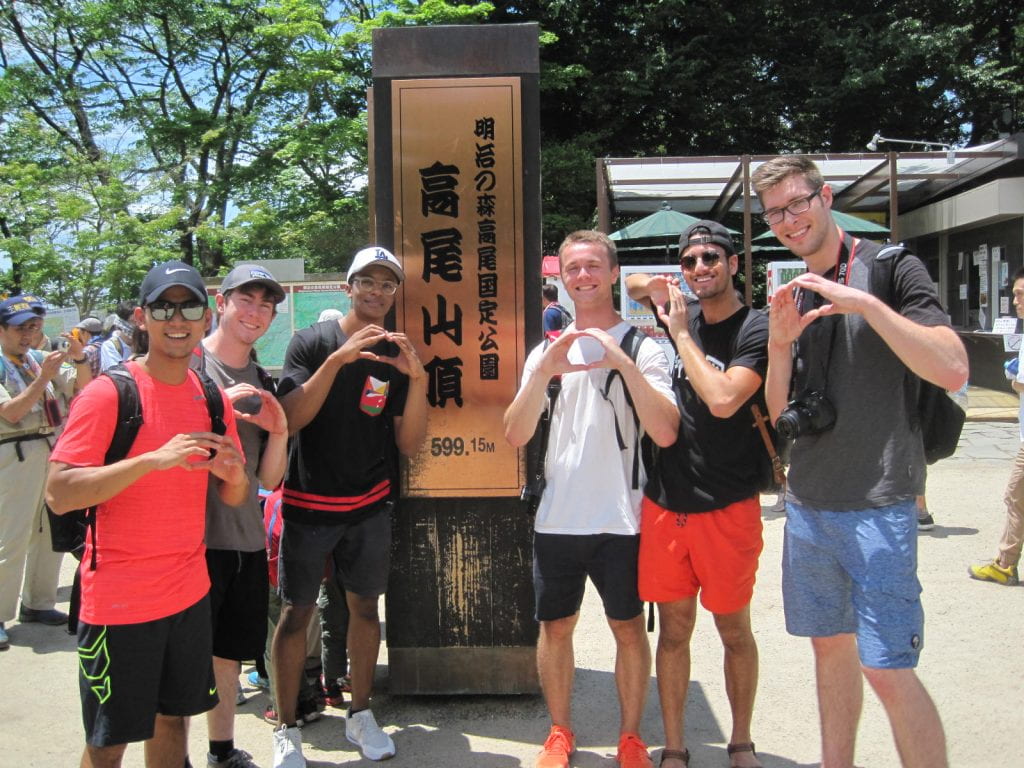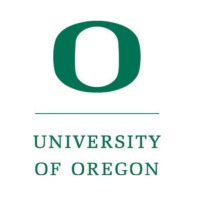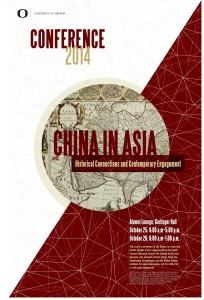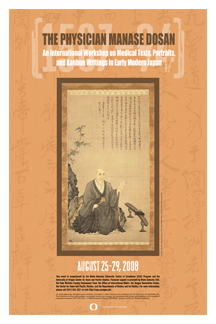CAPS Visiting Faculty and Courtesy Appointments by Year
2022
Tae-up Jung, Busan University of Foreign Studies, Korea
Seonha Park, Munhwa Broadcasting Corporation, Korea
Iram Bano, Karakoram International University, Pakistan
Akber Ali, Karakoram International University, Pakistan
Sher Sultan Baig, Karakoram International University, Pakistan
Karamat Ali, Karakoram International University, Pakistan
Garee Khan, Karakoram International University, Pakistan
Iqtidar Hussain, Karakoram International University, Pakistan
2019
Chunxia Ma, Yangzhou University, China
Chenting Ma, Beihang University, China
Lin ZHU (Julia ZHU), Beijing International Studies University, China
Bokyoung Hong, Jilin University, South Korea
Kwan Hee Cho, Samgmyung University, South Korea
Hoon Young Koo, Chungnam National University, South Korea
Wei Tang, Yunnan Press Group, China
Meiyan Liu, Huaqiao University, China
Rui Jin, Sichuan International Studies University, China
Victoria Rose Montrose, Department of East Asian Languages and Cultures, Univesity of Southern California, USA
Takashi Iba, Keio University, Japan
Su Fang, Tongren Polytechni College, China
Amanda Thounaojam, Centre for Environmental Planning and Technology University, India
2018
Geun-Gheol Lee, Konkuk University, South Korea
Hoang Phong Tuan, Hochiminh City University of Education, Vietnam
Hyeong-Ki Kwon, Seoul National University, South Korea
Jun Huo, Jiangsu University, China
Kai Qin, Guilin University of Electronic Technology, China
Kimiko Tsukada, Macquarie University, Australia
Nguyen Luong Hai Khoi, Hochiminh City University of Education, Vietnam
Nguyen Thi Minh, Hochiminh City University of Pedagogy, Vietnam
Peng Hao, Hunan University of Commerce, China
Xiaoping Bai, Zhejiang Sci-Tech University, China
Xuan Luo, Zhejiang Water Resource and Electric Power University, China
2017
Aiyun Meng, Northeast Normal University
Fuluowa Li, Soochow University, China
Helen Liu, Soochow University, China
Howard Van Trease , University of the South Pacific, Venuatu
Huiying Wang, Chinese Academy of Social Sciences, China
Jinping Song, Beijing Normal University, China
Kun Tsai, National Chiayi University, Taiwan
Liguo Yang, Hengyang Normal University, China
Like Fan, Shanghai International Studies University, China
Mami Takahashi, Portland Community College, Portland OR
Mary Erbaugh, Independent Scholar
Michelle Chaewon Kim, Seoul National University, South Korea
Mookyu Kim, Pukyong National University, Republic of Korea
Sangbae Kim, Kyungpook National University, Republic of Korea
Tsunehiko Yabe, Hosei University, Japan
Wenting Yang, Chongqing Normal University, China
Xiaohua Zhao, South China Normal University, China
Yan Zhang, Ningxia University, China
Yanjun Kong, Jiangnan University, China
Ye Zhao, Beijing Institute of Architectural Design, China
Yuan Ye, Southwest University, China
2016
Asghar Khan Jamal, Karakoram International University, Pakistan
Chulwon Jung, Seoul Broadcasting System, Korea
Eun Na, Seoul National University, Korea
Helen Liu
Huijing Wang, China Scholarship Council, China
Megumi Unno
Muhammad Nasim, Karakoram International University, Pakistan
Muhammad Zafar Khan, Karakoram International University, Pakistan
Muhammed Athar, Karakoram International University, Pakistan
Pinyu Chen, South China Normal University, China
Qingqing Zhao, Hong Kong Polytechnic University, China
Shih-Chung Hsieh, National Taiwan University, Taiwan
Sungyoung Lee, Kwangwoon University, Korea
Won-il Cho, Kyonggi University, Korea
Yuan Ye, Chinese National Academy of Arts, China
2015
(Mian) Yasir Hayat, University of Peshawar, Pakistan
Bin Zhu, South Chin Agricultural University, China
Chang Deok Lee, Gyeongin National University of Education, Korea
Fangjun Du Guizhou, Normal University, China
Ga-Yeon Go, Co-curator at University Museum of Art, Korea
Haitao Ren, Hebei Normal University, China
Jamila Baig, Karakoram International University, Pakistan
Jeongsub Nam, Yeungnam University, South Korea
June Woong Rhee, Seoul National University Department of Communication, South Korea
Li Xin, Shanghai International Studies University, China
Manzoor Ali, Karakoram International University, Pakistan
Mary Erbaugh, Independent Scholar, USA
Mehtab Alam, Karakoram International University, Pakistan
Qingyu Yan, Jiangnan University, China
Qiuhang Zhang, Shanghai International Studies University, China
Razia Bano, Karakoram International University, Pakistan
Salima Shahin, Karakoram International University, Pakistan
Sanghee Kim, Seoul National University, South Korea
Shamsher Ali, Karakoram International University, Pakistan
Shilin Zheng, South China Normal University, China
Sun Young Park, Kyungpook National University, Korea
Xiaochun Song, Hunan University, China
Zhigang Chen, Shaanxi Normal University, China
2014
Xiaomei Cai, South China Normal University, China
Xiaohong Chen, Huaihua College, China
Yongrok Choi, Inha University, Korea
Min Hou, Foreign Language School At Taiyuan University, China
Suqing Hu, Hunan University, China
Heejung Jung, Chosun University, South Korea
Hyong-yol Kim, Dong-eui University, Korea
Young-Min Kim, Dongduk Women’s University, South Korea
Sanghyun Kim, Kyungpook National University, South Korea
Jeongwong Lee, Kyonggi University, Korea
John Lehman, University of Aslaska Fairbanks, USA
Chunmei Li, South China Normal University, China
Haixia Li, Shanghai University, China
Misao Makino, American International Institute of Educational Research, Japan
Byungchae Rhee, Chungnam National University, South Korea
Song Nai Rhee, Northwest Christian University, Japan
Ji Hyun Song, Anyang University, Korea
Rui Guo, Xuzhou Kindergarten Teachers College, China
2013
Byungchae Rhee, Chungnam National University, South Korea
Sang Hyuk Park, TV Producer, South Korea
Sangtaek Lim, Pusan National University, South Korea
Chunmei Li, South China Normal University, China
Hosuk Choi, Pukyong National University, South Korea
Mary Erbaugh, Independent Scholar, USA
Seokwoo Kim, University of Seoul, Korea
Soo Jin Kim, Dongyang Mirae University, Korea
Ann Wetherell, Portland State University, USA
Joon Youn Kim, Korean University, South Korea
Youngsoo Goh, Tezukayama University, Japan
Jeong-Young Seong, Chungbuk National University, South Korea
Kyu Yeol Park, University of Ulsan, South Korea
Tong Wen, Jinan University, China
Tsutomu Hattori, Tokyo University of Agriculture, Japan
Jong-Ho Lee, Korea University Business School, South Korea
2012
Sangtaek Lim, Pusan National University, South Korea
2011
Hua Wang, Jinan University, China
Jun Kyung Ryu, Sungshin Women’s University, South Korea
Jiho Jang, Hankuk University of Foreign Studies, South Korea
Taik-young Hamm, University of North Korean Studies, South Korea
Feng Yueran, Minzu University, China
Debasish Chaudhuri, Vivekenand International Foundation, India
Lori Meeks, University of Southern California, USA
Yeon Kwan Park, Chungwoon University, South Korea
Seong Keun Yi, Sungshin Women’s University, South Korea
2010
Yutong Yu, Peking University, China
Ann Wetherall, Portland State University, USA
Kyeong Kim, Hanyang Women’s College, South Korea
Rong Hu, Southwest China University, China
Lin Zhang, Dalian Maritime University, China
Eunhan Bae, Dankook University, South Korea
2009
Yu Hong Yao, Tongli University, China
Song Nai Rhee, Northwest Christian College, USA
Teruo Sakurada, Hannan University, Japan
Feng Dan, Sun Yat-sen University, China
Ming Hong, Minzu University, China
Sue Jean Kang, The Dong-A Daily Newspaper, South Korea
2008
Patricia Thorton, Portland State University, USA
Myung-hee Jim, Chungju National University, South Korea
Pat Lucas, University of China, China
Bruce Gilly, Portland State University, USA
Chaozhi Zhang, Sun Yat-sen University, China
Chuke Wu, Central University for Nationalities, China
Zhuoni Wang, Renmin University of China, China
Sang Duk Lee, Sunmoon University, South Korea
Jae-il Kwon, Seoul National University, South Korea
2007
Woo Soo Park, Hankuk University, South Korea
Cong Cao, Levin Graduate Institute of International Relations and Commerce, USA
Weihong Peng, Central University for Nationalities, China
Hua Hu, Chinese Women’s University, China
An Suk Son, Kanagawa University, Japan
Seong-Ryong Lee, National Election Commission, South Korea
Hyun Suk Cho, Seoul National University of Technology, South Korea
Tao Hu, State Environmental Protection Administration, China
2006
Young Rai Kim, Chungbuk National University, South Korea
Hei Jin Ahn, Dankook University, South Korea
Min-Yeong Jeong, Seowon University, South Korea
Yonghi Kim, National Election Commission, South Korea
Jae-Jin Lee, Hanyang University, South Korea
Hongdong Kim, Cultural Heritage Administration, Korean Government, South Korea
Young Mok Chung, Seoul National University, South Korea
2005
Mary Erbaugh, Univerity of Oregon, USA
2004
Chang-Suk Chung, Dongduk Women’s University, South Korea
Inheun Choi, Inha University, South Korea
Kyeung-Sin Park, University of Ulsan, South Korea
Moon Hyun Nam, Seoul Economic Daily, South Korea
2003
Bing Shi, Chinese Academy of Sciences, China
2002
Feng Yi, Institute of East Asian Studies, France
Kojiro Nakamura, Yokohama National University, Japan
Young-Mi Kim, Sangmyung University, South Korea
Byung-chul Jung, Chonnam National University, South Korea
2001
Hou Zhen Ping, Xiamen University , China
Ichiji Ishii, House of Councillors, Japan
Dong-Ki MIN, National Assembly of Korea, South Korea
Ki-Sung Koo, National Assembly of Korea, South Korea
Joo Hong Kim, University of Ulsan, South Korea
Hong-Kyung Kim , Sungkyunkkwan University, South Korea
Choong-Sik KWON, Office for Government Policy Coordination, South Korea
Dong-Jin Son, Dongguk University, South Korea
Ravi Lonkani, Payap University, Thailand
2000
Tao Hu, State Environmental Protection Administration, China
Sirilaksana Khoman, Thammasat University, Thailand









